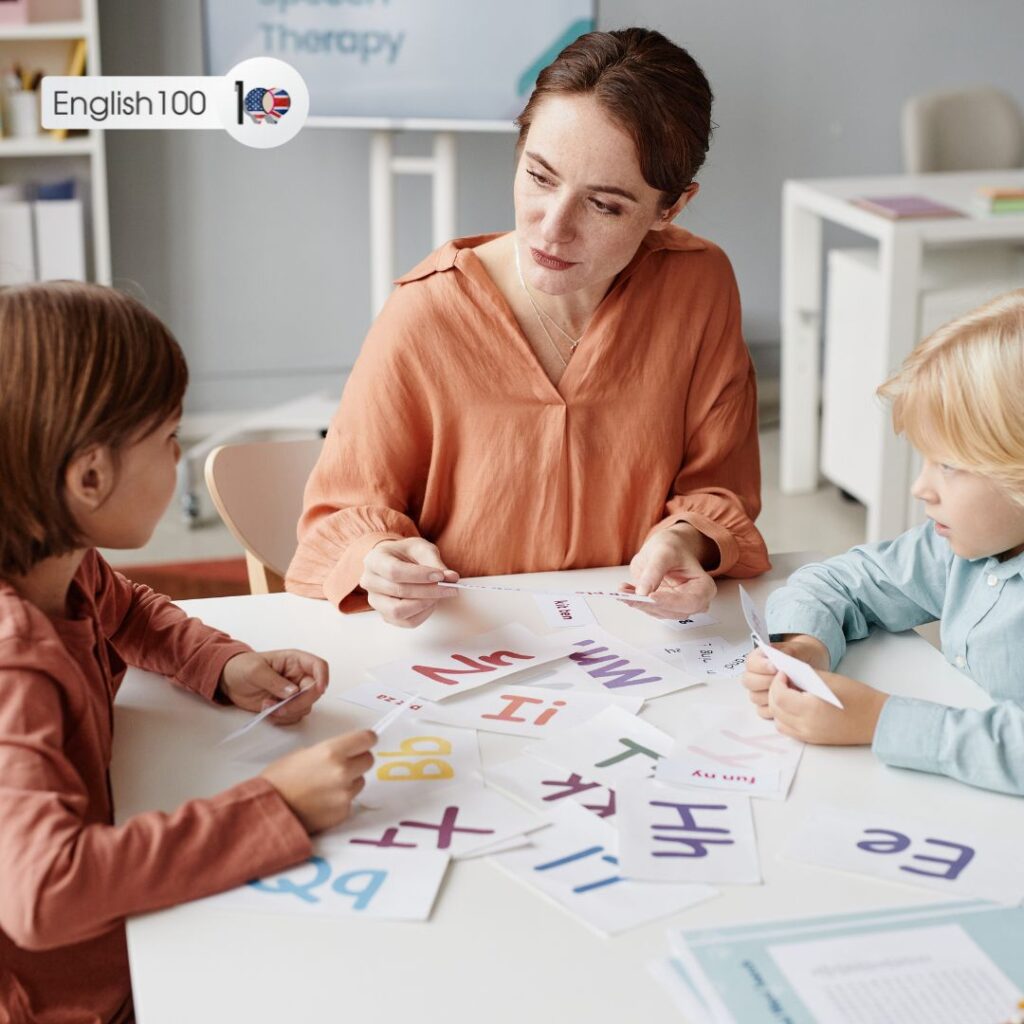As an ELL teacher in special education, you have a unique set of challenges and responsibilities. In this blog post, we’ll explore the role of an English language learner teacher in special education and provide tips on how to create effective lesson plans that meet the needs of all your students.
We’ll also discuss some of the common challenges faced by ELL teachers in special education and offer strategies for overcoming them. So whether you’re a seasoned ELL teacher or just starting out, this blog has something for you.
The role of English language learner teacher:

English language learner teachers play a crucial role in helping students who are not native English speakers develop their language skills. These teachers help students improve their listening, speaking, reading, and writing abilities in English by providing tailored instruction that takes into account each student’s unique needs and learning styles.
They also work closely with other teachers to ensure that English language learners have access to the same curriculum as their peers, while also providing additional support as needed.
In addition to teaching language skills, English language learner teachers may also provide cultural awareness training and help students adjust to life in a new country.
Their dedication and expertise are essential in ensuring that all students have the opportunity to succeed academically and socially.
ESL teachers work with English Language Learners (ELLs), or those students for whom English is not their primary language. ESL teachers work with ELLs to help them acquire fluency in English, both spoken and in the written word.
Tips to create effective lesson plans:
Creating effective lesson plans for English Language Learners in Special Education or high school requires careful consideration and attention to their unique needs. Here are some tips to help you create lesson plans that are engaging, accessible, and effective:
1. Use visual aids: Visual aids can be incredibly helpful for ELLs with special needs. Incorporating pictures, diagrams, and other visuals into your lessons can help students understand concepts more easily.
2. Simplify language: It’s important to use simple, clear language when working with ELLs in Special Education. Avoid using complex vocabulary or idioms that may be difficult for them to understand.
3. Provide real-life examples: Providing real-life examples can help ELLs connect abstract concepts to their own experiences, making the material more meaningful and memorable.
4. Use repetition: Repetition is key when working with ELLs in Special Education. Repeating key vocabulary and concepts throughout the lesson can help reinforce learning and improve retention.
5. Incorporate hands-on activities: Hands-on activities can be a great way to engage ELLs with special needs in the learning process. Activities such as role-playing, group projects, or experiments can provide a more interactive and engaging experience for students.
By following these tips, you can create lesson plans that are effective, accessible, and enjoyable for English Language Learners in Special Education.
Common challenges:

Proficiency English Language Learner teachers in special education face unique challenges that can make their job difficult.
- One of the most common challenges that face teachers of English is communication barriers, as many students may not speak English fluently or at all. This can make it challenging to assess their needs and provide appropriate support.
- Another challenge is the lack of resources and materials available for ELL students in special education. Teachers may need to create their own materials or adapt existing ones to meet the needs of their students.
To overcome these challenges, English language learner teachers in special education can use a variety of strategies:
- Using visual aids and graphic organizers to help students understand concepts
- Providing opportunities for peer-to-peer interaction to promote language development
- Working closely with parents and other educators to ensure that students receive consistent support both inside and outside the classroom.
- By being creative, resourceful, and dedicated, ELL teachers in special education can help their students succeed and thrive despite the challenges they may face.
Learn to teach English as a second language
To learn to teach English as a second language (ESL), you can follow these steps:
Educational Background: Consider obtaining a degree in education, English, linguistics, or a related field. While not always required, having a formal education background can provide you with valuable knowledge and skills for teaching ESL.
ESL Certification: Pursue ESL certification or specialized training programs. Many institutions offer ESL certification programs that cover teaching methodologies, language acquisition theories, classroom management techniques, and practical teaching experience. Look for accredited programs that align with your career goals.
Gain Experience: Gain experience working with English language learners by volunteering or working as a tutor, teacher’s assistant, or conversation partner. This hands-on experience will help you develop teaching skills, cultural competence, and an understanding of the needs of ESL students.
Stay Informed: Stay informed about current trends, best practices, and research in ESL education. Attend workshops, conferences, and professional development opportunities to enhance your knowledge and stay up-to-date with the latest developments in the field.
Develop Language Skills: Continuously work on improving your own language skills, including proficiency in English grammar, vocabulary, pronunciation, and cultural nuances. Being proficient in the language you’re teaching is essential for effective communication and instruction.
Network: Network with other ESL professionals, educators, and organizations in the field. Join professional associations, online forums, and social media groups to connect with like-minded individuals, share resources, and collaborate on projects.
Plan Lessons: Learn how to plan effective ESL lessons that are engaging, interactive, and student-centered. Familiarize yourself with a variety of teaching materials, resources, and technologies that can support language learning in the classroom.
Adapt Teaching Methods: Adapt your teaching methods and strategies to meet the diverse needs and learning styles of ESL students. Incorporate a variety of instructional techniques, such as visual aids, hands-on activities, group work, and technology-enhanced learning, to cater to different learning preferences.
Cultural Sensitivity: Cultivate cultural sensitivity and awareness in your teaching practice. Respect and celebrate the cultural backgrounds, experiences, and perspectives of your students, and create an inclusive and supportive learning environment.
Reflect and Improve: Reflect on your teaching practice regularly and seek feedback from students, colleagues, and mentors. Continuously evaluate your teaching methods, assess student progress, and identify areas for improvement to enhance your effectiveness as an ESL teacher.
Advocacy in English language teaching and learning
Advocacy in English language teaching and learning involves promoting the importance of English language education and supporting policies, programs, and initiatives that benefit English language learners and educators. Here are some ways advocacy can be carried out in the field of English language teaching and learning:
- Promoting Access to Quality Education
- Supporting Language Diversity
- Advocating for Professional Development
- Addressing Language Policy Issues
- Promoting Advocacy Skills
- Engaging Stakeholders
- Raising Awareness
- Monitoring and Evaluation
Some FAQs:
How to learn to teach English as a second language?
- Gain a Solid Understanding of English Grammar and Language
- Pursue Relevant Education and Training
- Participate in Professional Development Workshops and Courses
- Observe Experienced ESL Teachers
- Gain Practical Experience
- Participate in a Teaching Practicum
- Stay Informed About ESL Trends and Research
- Cultivate Cultural Competence
- Practice Reflective Teaching
- Continuously Improve Your Teaching Skills
What is the role of an English language learner teacher?
The role of an English language learner teacher is to provide instruction and support to students who are learning English as a second language. Their main goal is to help students develop their English language skills in speaking, listening, reading, and writing.
An English language learner teacher creates lesson plans and curriculum that cater to the needs and abilities of their students. They use various teaching methods and resources to engage students and facilitate their language acquisition process. This may include using visual aids, interactive activities, and technology to enhance learning.
In addition to classroom instruction, an English language learner teacher also assesses students’ language proficiency levels through assessments and tests. They track students’ progress and provide feedback to help them improve their language skills.
Another important aspect of the role is to create a supportive and inclusive learning environment. English language learner teachers often work with students from diverse cultural backgrounds, so they need to be sensitive to their students’ needs and provide a welcoming and respectful atmosphere.
Furthermore, an English language learner teacher collaborates with other educators, parents, and administrators to ensure that students receive the necessary support and resources to succeed in their language learning journey.
Overall, the role of an English language learner teacher is to empower students to become confident and proficient English language speakers, while also fostering their cultural understanding and appreciation.
What is the difference between ESL and ELL?
- ESL stands for English as a Second Language.
- ELL stands for English as a Second Language Learner.
- ESL students are typically immigrants or people who have not received formal education in their native language.
- ELL students are typically children who have not received formal education in their native language.
An ESL teacher is responsible for providing lessons and support to students who are learning English as a second language. Often ESL teachers use a real-life context to help students grasp the complexities of the language.
What is the difference between ESL and Tesol?
- ESL stands for English as a Second Language and refers to teaching English to non-native speakers in English-speaking countries.
- TESOL stands for Teaching English to Speakers of Other Languages and encompasses teaching English to non-native speakers both in English-speaking countries and in non-English-speaking countries.
- ESL focuses on teaching English to immigrants or individuals living in English-speaking countries, while TESOL includes teaching English as a foreign language in non-English-speaking countries.
- ESL primarily targets language acquisition and communication skills, while TESOL incorporates language teaching methodologies and approaches to cater to diverse cultural and linguistic backgrounds.
What are ELL teachers called?
English language learner teachers are typically called special educators, special educators for students with disabilities, or special education teachers.
How do I get an ESL certificate?
- To get an ESL teaching certificate, you will need to complete a course that offers instruction in English as a second language.
- Many high schools offer ESL teacher certificate programs that can provide you with the skills and knowledge you need to work in a foreign country.
- You can also find ESL teacher certificate programs online.
- Once you have completed an ESL teacher certificate program, you will be able to apply for an English as a Second Language (ESL) visa.
- This visa will allow you to work in a foreign country as an English teacher.
What does an English language learner teacher do?
An English language learner teacher is responsible for helping students who are still learning English as a second language to develop their skills in reading, writing, speaking, and listening. ELL teachers work with students of all ages and backgrounds, from young children to adults, and may teach in various settings such as public schools, community colleges or adult education centers.
In brief, English language learner teachers typically have a degree in linguistics, education, or another related field and experience working with students who are learning English as a second language. They provide instruction and support to help these students improve their language skills, both inside and outside the classroom.
References:
- How to Become an ESL Teacher. (2022, February 9). What is ESL | What is ELL | What is TESOL | What is ESOL | What is TEFL. How to Become an ESL Teacher | ESL Teacher Education and Requirements. https://www.eslteacheredu.org/what-is-an-esl-teacher/#:~:text=ESL%20teachers%20work%20with%20English,and%20in%20the%20written%20word.
- How to become an ESL Teacher: career and salary information. (2023, June 12). Teacher Certification Degrees. https://www.teachercertificationdegrees.com/careers/esl-teacher/
